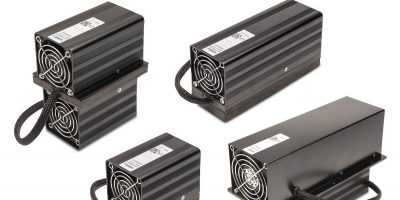Thermoelectric assemblies are miniature for medical instruments
Thermoelectric assemblies (TEAs) from Laird are compact and suitable for analytical and medical instrumentation. When used with an SR-54 Series programmable temperature controller, the Tunnel series TEAs provide precise temperature control with condensation protection for applications below dew point, says Laird.
There is a trend to miniaturise analytical and medical instruments to free up lab space. The resulting smaller footprint increases the heat flux density and thermal challenges, points out the company. Waste heat must be efficiently managed to minimise heating areas requiring cooling. Increased cooling performance needs to be offset with quieter operation. For systems that require refrigeration, temperature control systems play an important role in optimisation of test results. One popular cooling solution enables OEMs to meet these thermal challenges by using TEAs with integrated temperature control. The Tunnel TEA now offers an expanded line of cooling capacities ranging up to 100W with higher efficiencies that run quieter.
When combined with an advanced SR-54 Series temperature controller, the Tunnel series TEA offers temperature control to within ± one degree C. The SR-54 temperature controller also provides monitoring and alarm functionality to identify a problematic fan, thermoelectric module, over-temperature thermostat and temperature sensor failure, all of which are critical to maximise medical equipment up-ime. The controller requires minimal programming and lowers operational noise, says Laird, as fan speeds can be lowered once the specified temperature has been reached.
Laird’s Tunnel series use either an air-to-air or direct-to-air heat transfer mechanisms designed with optimised thermoelectric modules (TEMs) for high efficiency, and brand name fans for low noise and improved reliability. Additional design features include improved sealing to prevent moisture intrusion when running below dew point conditions and reduced number of airflow paths required to operate more efficiently compared to traditional impingement flow TEAs.




